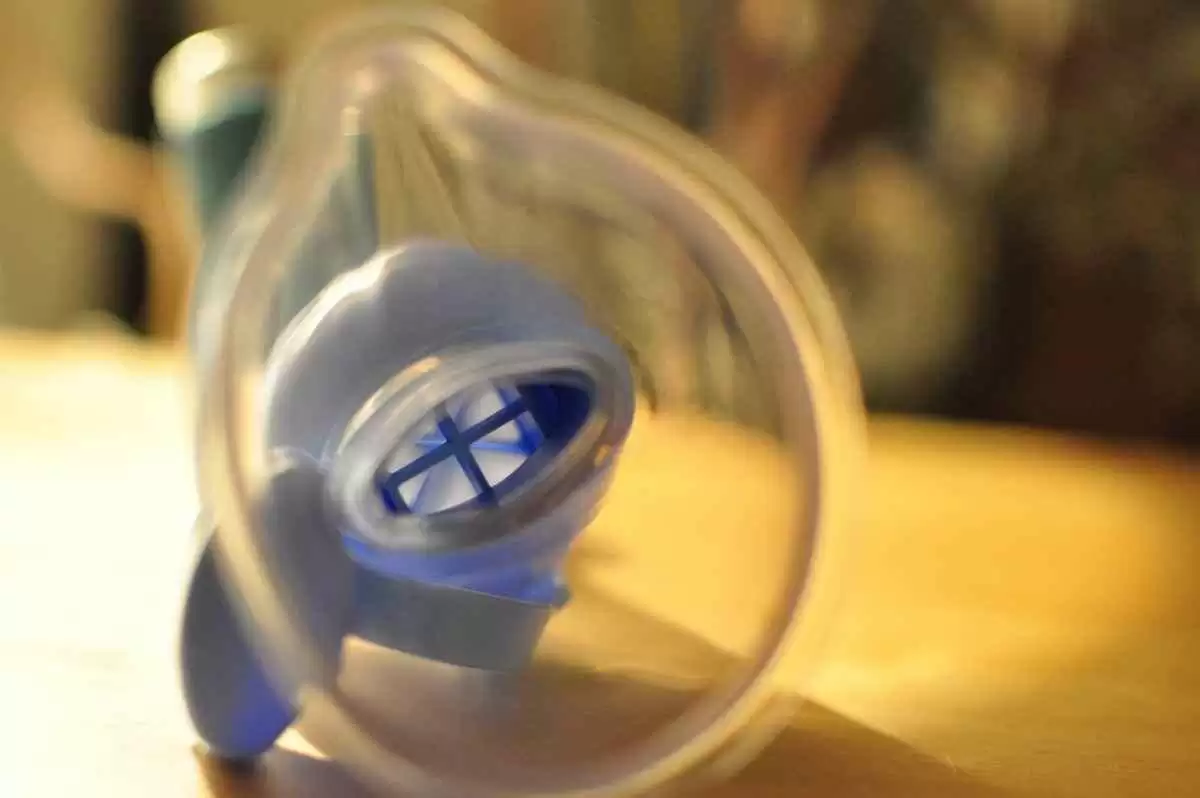
Celiac.com 01/08/2022 - Celiac disease is a chronic inflammatory disease of the gut occurring in genetically susceptible individuals after ingestion of gluten. It is characterized by a flattened mucosa, villous atrophy and crypt hyperplasia in the small intestine and by the classic malabsorption syndrome (diarrhea, steatorrhea, and weight-loss) or by minor apparently unrelated symptoms such as iron-deficiency anaemia, osteopenic bone disease, amenorrhea and infertility(1).
The diagnostic algorithm of this disease demand a screening approach based on anti-endomysium (EmA) and anti-tissue transglutaminase (anti-tTG) and, in case of antibodies-positivity, patients should undergo intestinal biopsy to confirm the presence of small bowel lesions according to celiac disease.
Celiac.com Sponsor (A12):
Unfortunately, this approach is rarely effective in clinical practice, especially in patients with mild to moderate histological lesions. In fact several recent studies have shown that 5-10% of patients affected by mild to moderate lesions of the small bowel typically seen in celiac disease actually lack EmA and anti-tTG antibodies(2-5). In light of these scientific results, should all patients who are suspected to have, or who are at risk for celiac disease—including first degree relatives of celiacs, those with Down’s syndrome or autoimmune thyroid disease, patients whose stories indicate celiac disease, etc.—undergo intestinal biopsy? This does not seem like a very reliable approach—perhaps other more non-invasive tests should be done in conjunction with serological testing to help determine which patients should undergo a biopsy. The sorbitol H2 -breath test (H2 -BT) could be exactly what is needed.
Sorbitol is a hexahydroxy alcohol that is present in many fruits such as peaches6 . It is used as a sugar substitute in dietetic foods and as a drug vehicle. At low doses (5 grams/day) sorbitol is completely absorbed by the small bowel, and low dose ingestion does not typically produce any symptoms. However, we know that celiac disease patients often experience sugar malabsorption (as lactose malabsorption)(7), which prompted us to hypothesize that the same may be true for sorbitol. In general terms, sugar malabsorption could be primary— congenital enzymatic/ carrier deficiency, or acquired—developing after intestinal damage caused by acute gastroenteritis, medications, Crohn’s disease, celiac disease, etc.(8) In the normal individual, gut bacteria are primarily located in the colon and in the distal small intestine. When sugar malabsorption is present, unabsorbed sugars in excess are available in the distal small bowel and colon for bacterial fermentation, with air excretion of H2 and CH4 9 . This mechanism occurs for all sugars— lactose, fructose, glucose, sorbitol—and H2 lactose, fructose and sorbitol breath tests are commonly used to detect specific sugar malabsorption issues.
Sorbitol H2-BT Methods
This is a simple, non invasive, repeatable, and cheap test. To minimize basal hydrogen excretion, subjects are asked to have a carbohydrate-restricted dinner on the day before the test (for example, a meal of rice and meat) and are studied after an overnight fasting for at least 12 hours. On the testing days, patients do a mouthwash with 20 ml of chlorhexidine 0.05%; smoking and physical exercise are not allowed for 30 minutes before and during the test. End expiratory samples are collected before the patients drink the test solution— 5g of sorbitol in 150/200 ml of tap water—and every 30 minutes for 4 hours using a two-bag system. The two-bag system is a device consisting of a mouthpiece, a T-valve and two collapsible bags, for collection of dead space and alveolar air. From this system, the breath sample is aspirated into a 20 ml plastic syringe. Samples are generally evaluated for H2 using a model DP Quintron Gas Cromatograph (Quintron Instrument Company, Milwakee, WI). It is also possible to measure the hydrogen concentration in each collected sample by a portable breath-hydrogen analyzer (for example, EC60 Gastrolyzer Breath Hydrogen Monitor, Bedfont Scientific Ltd, Upchurch – Kent, England [U.K.]). An increase in H2 concentration of at least 20 ppm over fasting baseline is considered positive for sorbitol malabsorption. The cut-off for calculating the validity of the test is shifted every 30 minutes, and a Response Operating Characteristics (ROC) curve is plotted on the basis of the obtained results. Results are expressed as parts per million (ppm).
Sorbitol H2-BT and Celiac Disease
The first study assessing the effectiveness of sorbitol in detecting intestinal damage in celiac disease was performed by Corazza, et al. in 1988. They showed for the first time that low dose concentrations of sorbitol (5 grams at 2%) are malabsorbed in almost all celiac disease patients(10), and these results were confirmed in a more recent study(11). These provocative results led to the idea that it could be used as a screening tool in celiac disease, in addition to serological tests. However, these results have not been completely considered by investigators, and using sorbitol H2 -BT to screen for celiac disease was not investigated further for another four years.
In the 2001 we published a paper about the low-prevalence of anti-gliadin and anti-endomysium antibodies in a sub-clinical/silent form of celiac disease. We found that 5-20% of celiac disease patients affected by this form of the disease lack these antibodies according to histological damage4 , and we found the same results using anti-tTG12. Based on this research it was apparent that there was a risk of not properly diagnosing a very high percentage of celiac disease patients if their screening is based solely on serological tests. At this point we tried to use the sorbitol H2 -BT as screening tool to obtain more information on patients’ intestinal absorption, and to help select patients who should undergo intestinal biopsy.
Sorbitol H2-BT in Detecting the Sub-clinical/Silent Form of Celiac Disease
Sub-clinical celiac disease is defined by the presence of a gluten sensitive enteropathy with extra-intestinal symptoms (iron-deficiency anemia, alopecia, recurrent abortion, Breath Test, continued “there was a risk of not properly diagnosing a very high percentage of celiac disease patients if their screening is based solely on serological tests” etc.) but without gastrointestinal symptoms, whereas silent celiac disease is defined by the presence of a gluten-sensitive enteropathy not accompanied by any symptoms, but identified during the course of screening of high-risk groups such as first-degree relatives of celiac patients, patients with insulin-dependent diabetes, Down’s syndrome, IgA deficiency and thyroid disorders.
In detecting silent celiac disease sorbitol H2 -BT seems to be better than serological tests. We found that EmA were positive in 77/96 (80.80%) and sorbitol H2 -BT was positive in 94/96 (97.91%) of patients with sub-clinical celiac disease, whereas EmA were positive in 17/27 (62.96%) and sorbitol H2 -BT was positive in 26/ 27 (96.29%) of patients with silent celiac disease (p<0.001 in both forms of celiac disease). The best cut-off value in ppm and minutes in both forms of celiac disease are higher and shorter in the severe form rather than in the mild form of intestinal damage respectively (p<0.001 in both forms)13. Therefore sorbitol excretion seems to be closely correlated with the severity of histological lesions.
Sorbitol H2-BT as Screening Test in Relatives of Celiac Disease Patients
The prevalence of celiac disease among first-degree relatives has been reported to be about 10- 20%, and approximately 50% of the newly diagnosed cases are asymptomatic(14,15). It is known that lymphoma and cancer deaths(16,17) occur more frequently in first-degree relatives of celiac disease patients, and it is also known that gluten withdrawal has a protective role in the complications associated with the disease(18). However, up to 50% of celiac disease relatives show mild histological damage without evident mucosal atrophy(19-21). Since several recent studies showed that serological tests are ineffective in detecting celiac disease in patients with mild histological damage, there is a concrete risk that a significant proportion of celiacs among relatives may be missed. Since a routine intestinal biopsy in all family members is, however, unfeasible—asymptomatic individuals would rarely accept such an approach—it is very important to identify an optimal non-invasive method of screening first-degree relatives. In this regard sorbitol H2 -BT screening seems to be better than serological tests.
In my experience, sorbitol H2 -BT is extremely effective at detecting histological damage in relatives of those with celiac disease. We found that AGA, EmA and anti-tTG showed strong positivity only when there was severe intestinal damage (Marsh IIIb-c lesions—but overall positivity was 36.73%, 38.78%, and 44.89% for AGA, EmA and anti-tTG respectively), whereas sorbitol H2 -BT showed a strong positivity in patients with only mild histological damage (Marsh I - IIIa—overall positivity was 83.67%). A significant proportion of celiac disease patients will be missed if relatives of those with celiac disease are screened only via serology(22).
Sorbitol H2-BT in Assessing Histological Recovery after a Gluten-free Diet
Currently the only effective therapeutic approach to celiac disease is the gluten-free diet, and the result of a proper gluten-free diet is clinical and histological improvement. In particular, the gluten-free diet plays a key role in preventing nutritional deficiency, especially of micronutrients, and in reducing the risk of the development of intestinal malignancies. There is great demand for highly sensitive, non-invasive tests that can be done to determine histological recovery in patients after the start of a gluten-free diet—with the ultimate goal of reducing or eliminating the need of follow-up endoscopies and biopsies.
If we consider EMA an indicator of small bowel damage, it would be expected to persist until histological recovery occurs. However, several recent studies failed to show a positive relationship between EMA and histological improvement after a gluten-free diet(23-26). Our study confirmed these experiences, since microscopic damage persists at histological examination during the follow-up despite EMA negativity. It is difficult to explain the poor predictor value of EMA in assessing histological recovery. EMA positivity seems to be related not only to the length of intestinal involvement but also to the grade of histologic damage(4) . Thus, when histological damage improves we can note a false EMA negativity, since histological lesions improve more slowly than EMA seroconversion. Moreover, EMA are a marker of the immunological activity related to the gluten sensitivity, it is therefore hypothesized that after a period of gluten restriction the immunological process can be quite inactive and thus EMA will subside.
Similarly, anti-tTG do not seem effective to assess histological recovery in the follow-up of celiac patients after they have started a gluten-free diet due to its poor correlation with histological damage. Anti-tTG is generated in genetically predisposed individuals by complexes formed between anti-tTG and gluten(27). So, it is hypothesize that anti-tTG should disappear soon after gluten withdrawal, and these findings have been frequently recognized in our clinical practice, for example we sometimes see a quick subsiding of anti-tTG values soon after patients begin a gluten-free diet—in some cases within few weeks.
In my experience, sorbitol H2-BT seems to be very effective even in assessing histological recovery after gluten-free diet. We found a strict correlation between cut-off values (in ppm and minutes) of H2 excretion and the patients’ histological lesions. In particular, maximal cut-off values (in ppm and in minutes) correlate statistically with a more severe degree of intestinal damage—patients with more severe histological lesions had higher cut-off value H2 levels and earlier peaks (in minutes). Likewise, we found that progressive histological recovery correlated significantly with decrease of maximal cut-off values (in ppm) and with the later appearance of the peak (in minutes). This is a very important finding, since it permits us to observe and to monitor the progressive improvement of the histological damage of small bowel after a gluten-free diet—without any small bowel biopsy(28, 29).
Sorbitol H2 -BT in Borderline Entheropathy
A clinical problem arises when patients present with symptoms suggestive of gluten sensitivity (diarrhea, weight loss, unresponsive iron-deficiency anemia, etc.) but small intestinal biopsies reveal only minor abnormalities, particularly lymphocytosis with or without crypt hyperplasia (Marsh I-II lesions). It is hypothesized that some of these patients have borderline celiac disease. A gluten challenge may be a good choice in these patients, as it may provoke a significant worsening of the mucosal lesions, which could lead to a correct diagnosis. This approach, however, may not be necessary if we have a sensitive non-invasive method to detect such mild intestinal lesions. Serological tests are insufficient in this area. We recently found that AGA, EmA and anti-tTG were positive in 0-20% of patients showing Marsh I-II lesions, whereas sorbitol H2 -BT was positive in 18- 41% of such cases(30). Clearly this data shows that it makes sense to use Sorbitol H2 -BT to detect cases of borderline entheropathy.
Factors Affecting Sorbitol H2-BT in Clinical Practice
Unfortunately, several factors may affect the results of sorbitol H2 -BT. First of all, sorbitol H2 -BT shows high sensitivity but low specificity. Several small bowel disorders, including Crohn’s disease, are associated with excessive rates of H2 breath excretion and then with sorbitol H2 -BT positivity(31). Moreover, the breath tests will be positive in the setting of not only small bowel mucosal injury, but also in cases of rapid intestinal transit and small bowel bacterial overgrowth(32). Finally, despite its low cost, the breath test is quite cumbersome, since it requires an overnight fast followed by at least 4 hours of the patient’s time for testing.
Conclusion
Sorbitol H2 -BT is a simple, feasible, repeatable, cheap, non-invasive test that can accurately assess intestinal absorption. Unfortunately low specificity may affect the results and may make it difficult for us to distinguish the different causes of malabsorption using only the sorbitol H2 -BT results. On the other hand, sorbitol H2 -BT may be very helpful and seems to be very promising in the following areas:
- Identifying patients suspected of having celiac disease with mild intestinal damage, who are serologically negative for celiac disease;
- Screening relatives of patients with celiac disease;
- Monitoring dietary compliance to the gluten-free diet
Although intestinal biopsies will remain the “gold standard” for assessing the state of small bowel, sorbitol H2 -BT is a very interesting and non-invasive test that has the potential to reveal just how large the current “black hole” in celiac disease diagnosis is. At the very least it can help diagnose patients whose complaints cause us to suspect celiac disease but who have negative blood tests, and it is an excellent method to monitor the recovery of patients who are on a gluten-free diet. It is a key part of my medical practice in the treatment of celiac disease.
References:
- Martucci S, Biagi F, Di Sabatino A, Corazza GR. Coeliac disease. Dig Liver Dis 2002; 34(suppl. 2): S150-3.
- Rostami K, Kerckhaert J, Tiemessen R, von Blomberg ME, Meijer JWR, Mulder CJJ. Sensitivity of antiendomysium and antigliadin antibodies in untreated celiac disease: disappointing in clinical practice. Am J Gastroenterol 1999;94: 888-94.
- Dickey W, Hughes DF, McMillan SA. Reliance on serum endomysial antibody testing underestimates the true prevalence of coeliac disease by one fifth. Scand J Gastroenterol 2000;35: 181-3.
- Tursi A, Brandimarte G, Giorgetti GM, Gigliobianco G, Lombardi D, Gasbarrini G. Low prevalence of antigliadin (AGA) and anti-endomysium (EMA) antibodies in subclinical/silent celiac disease. Am J Gastroenterol 2001;96: 1507-10.
- Abrams JA, Diamone B, Rotterdam H, Green PHR. Seronegative celiac disease: increased prevalence with lesser degrees of villous atrophy. Dig Dis Sci 2004;49: 546-50.
- Washüttl J, Reiderer P, Baucher E. A qualitative and quantitativestudy of sugar-alcohols in several foods. J Food Sci 1973;38: 1262-3.
- Ojetti V, Nucera G, Migneco A et al. High prevalence of celiac disease in patients with lactose intolerance. Digestion 2005;71: 106-10.
- wagerty DL Jr, Walling AD, Klein RM. Lactose intolerance. Am Fam Physician 2002;65: 1845-50.
- Strocchi A, Ellis C, Levitt MD. Reproducibility of measurement of trace gas concentrations in expired air. Gastroenterology 1991;101: 175-9.
- Corazza GR, Strocchi A, Rossi R, Sirola D, Gasbarrini G. Sorbitol malabsorption in normal volunteers and in patients with coeliac disease. Gut 1988;29: 44-8.
- Pelli MA, Capodicasa E, De Angelis V, Morelli A, Bassotti G. Sorbitol H2-breath test in celiac disease. Importance of early positivity. Gastroenterol Int 1998;11: 65-8.
- Tursi A, Brandimarte G, Giorgetti G. Prevalence of anti-tissue transglutaminase antibodies in different degrees of intestinal damage in celiac disease. J Clin Gastroenterol 2003; 36(3): 219-221.
- Tursi A, Brandimarte G, Giorgetti GM. Sorbitol H2- breath test versus anti-endomysium antibodies for the diagnosis of subclinical/ silent coeliac disease. Scand J Gastroenterol 2001;36: 1170-2.
- Marsh MN. Gluten, major histocompatibility complex, and the small intestine. A molecular and immunologic approach to the spectrum of gluten sensitivity (celiac sprue). Gastroenterology 1992;102: 330-54.
- Auricchio S, Mazzacca G, Tosi R, Visakorpi J, Maki M, Polanco I. Coeliac disease as familial condition: identification of asymptomatic patients within family groups. Gastroenterol Int 1988;1: 25-31.
- Barry RE, Morris JS, Kenwright S, Read AE. Coeliac disease and malignancy. The possible importance of familial involvement. Scand J Gastroenterol 1971;6: 205-207.
- Stokes PL, Prior P, Sorahan TM, McWalter RJ, Waterhouse JA, Cooke WT. Malignancy in relatives of patients with coeliac disease. Br J Prev Soc Med 1976;30: 27-21.
- Holmes GKT, Prior P, Lane MR, Pope D, Allan RN. Malignancy in coeliac disease – effect of gluted free diet. Gut 1989;30: 333-8.
- Corazza GR, Valentini RA, Frisoni M ETAL. Gliadin immune reactivity is associated with overt and latent enteropathy in relatives of celiac patients. Gastroenterology 1992; 103: 1517-22.
- Maki M, Holm K, Lipsaen V, Hallstrom O, Viander M, Collin P et al. Serological markers and HLA genes among healthy first-degree relatives of patients with coeliac disease. Lancet 1991;338: 1350-3.
- Vazquez H, Cabanne A, Sugai E, Fiorini A, Pedreira S, Maurino E et al. Serological markers identify latent coeliac disease among first-degree relatives. Eur J Gastroenterol Hepatol 1996;8: 15-21.
- A. Tursi, G. Brandimarte, G.M. Giorgetti, C.D. Inchingolo. Effectiveness of sorbitol H2 breath test in detecting histological damage among relatives of coeliacs. Scand J Gastroenterol 2003;38: 727-31.
- Bardella MT, Trovato C, Cesana BM, Pagliari C, Gebbia C, Peracchi M. Serological markers of celiac disease: is it time to change? Digest Liver Dis 2001;33: 426-31.
- Valentini RA, Andreani ML, Corazza GR, Gasbarrini G. IgA endomysium antibody. A valuable tool in the screening of coeliac disease but not its follow-up. Ital J Gastroenterol 1994;26: 279-82.
- Sategna-Guidetti C, Grosso SB, Bruno M, Grosso S. Is human umbilical cord the most suitable substrate for the detection of endomysium antibodies in the screening and follow-up of coeliac disease? Eur J Gastroenterol Hepatol 1997;9: 657-60.
- Dickey W, Hughes DF, McMillan SA. Disappearance of endomysial antibodies in treated celiac disease does not indicate histological recovery. Am J Gastroenterol 2001;95: 712-4.
- Dieterich W, Ehnis T, Bauer M et al. Identification of tissue transglutaminase as the autoantigen of celiac disease. Nat Med 1997;3: 797-801.
- Tursi A, Brandimarte G, Giorgetti GM. Sorbitol H2- breath test versus antiendomysium (EMA) antibodies to assess histological recovery after gluten-free diet in coeliac disease. Dig Liver Dis 2002;34: 846-50.
- Tursi A, Brandimarte G, Giorgetti GM. Lack of effectiveness of anti-transglutaminase antibodies in assessing histological recovery after gluten-free diet in celiac disease. J Clin Gastroenterol 2003;37: 381-5.
- Tursi A, Brandimarte G. The symptomatic and histological response to a gluten-free diet in patients with borderline enteropathy. J Clin Gastroenterol 2003;36: 13-7.
- Tursi A, Giorgetti GM, Brandimarte G, Elisei W. High prevalence of celiac disease among patients affected by Crohn’s disease. Inflamm Bowel Dis 2005;11: 662-6.
- Nucera G, Gabrielli M, Lupascu A et al. Abnormal breath test to lactose, fructose and sorbitol in irritable bowel syndrome may be explained by small intestinal bacterial overgrowth. Aliment Pharmacol Ther 2005;21: 1391-5.








.thumb.jpeg.68baa0c544d6e8650c8d7d90634190c3.jpeg)



Recommended Comments
There are no comments to display.
Create an account or sign in to comment
You need to be a member in order to leave a comment
Create an account
Sign up for a new account in our community. It's easy!
Register a new accountSign in
Already have an account? Sign in here.
Sign In Now